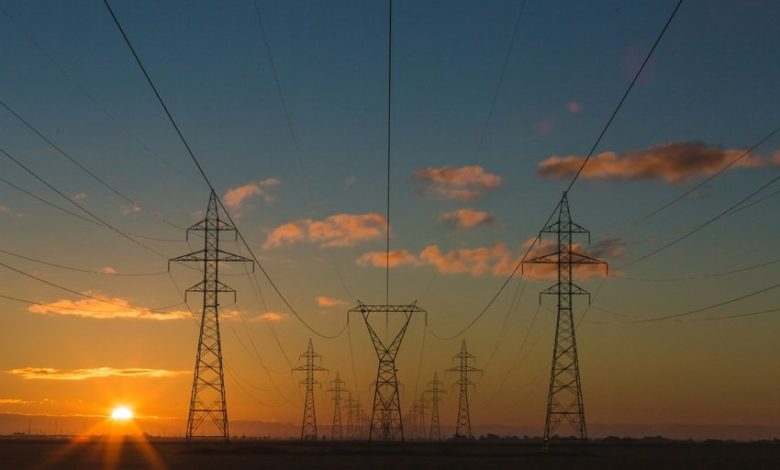Alphabet’s Billion-Dollar Fusion Gamble: Why Google Just Bought Into the Future of Energy

Alphabet (NASDAQ:GOOGL) has made headlines once again—this time with a bold move into nuclear fusion. The tech giant recently announced a deal with Massachusetts-based startup Commonwealth Fusion Systems (CFS) to purchase 200 megawatts of electricity from its future ARC power plant in Virginia. This move marks the largest-ever commercial fusion power agreement, and positions Alphabet at the forefront of what could become a clean energy revolution. While fusion remains an unproven commercial technology, Alphabet is betting big on its long-term viability amid skyrocketing power demands driven largely by AI, cloud computing, and data infrastructure. The company’s electricity consumption has more than doubled since 2020, with its latest environmental report highlighting an 11% increase in emissions last year alone. With net-zero ambitions by 2030 and regulatory pressures mounting, Alphabet’s fusion investment signals both urgency and ambition. Let us take a deeper look at what’s driving this high-stakes energy acquisition.
Surging Data Center Energy Demand
Alphabet’s power consumption has surged rapidly over the past five years, largely due to the exponential growth of its data centers, which power products like Google Search, YouTube, Gmail, and the Google Cloud Platform. According to its latest environmental report, Alphabet’s electricity usage reached more than 30 terawatt-hours in 2024, nearly double its levels from 2020. That’s equivalent to the annual power consumption of a small country like Ireland. This uptick is being driven by multiple fronts: the rising complexity of AI model training and inference workloads, broader cloud adoption by enterprises, and higher video content demand on YouTube. Alphabet also noted significant internal investments into newer platforms such as Bard and Gemini, which require massive computing infrastructure running 24/7. As energy requirements grow faster than clean energy infrastructure can scale, Alphabet is being pushed into early bets on future energy technologies. Fusion, if commercially viable by the 2030s, could serve as a long-term hedge against grid volatility and energy shortages, especially in densely packed data regions like Virginia, where the ARC plant is being developed. Moreover, stable power supply is not just a business continuity necessity but also a brand imperative for Alphabet, which has pledged to run on 24/7 carbon-free energy across all facilities. As electricity prices fluctuate and brownouts become more common in overburdened grids, locking in future low-carbon energy becomes not just strategic—it’s essential.
Escalating Emissions & Net-Zero Pressures
Alphabet’s environmental report for 2024 shows a worrying trend—its total greenhouse gas emissions have grown by over 50% since 2019, with a 6% year-over-year increase from 2023 to 2024. This is despite a massive ramp-up in clean energy procurement, including 8 gigawatts of renewables in 2024 alone. The company’s data centers, while more efficient per unit of compute than ever before, are still consuming more power overall due to AI and other high-performance workloads. This puts Alphabet’s 2030 net-zero commitment at risk, especially since it includes not only operational emissions but also supply chain and indirect emissions. The increasing difficulty in acquiring carbon-free energy that is both available and reliable has prompted Alphabet to explore next-generation sources like fusion. Fusion energy offers the tantalizing prospect of near-limitless, zero-carbon power without the long-lived nuclear waste associated with fission. However, no company has yet demonstrated a commercial fusion reactor that produces more energy than it consumes. By entering into a long-term contract with CFS, Alphabet is essentially locking in early access to what could become a crucial decarbonization pathway. The move also sends a signal to regulators and stakeholders that Alphabet is willing to lead in energy innovation, rather than rely solely on traditional wind and solar, which may not scale fast enough to meet tech-sector emissions targets. Still, the practical impact of the deal is long-term—it does not reduce emissions today—but may enable compliance and cost savings post-2030 if CFS’s plant delivers on schedule.
Competitive Positioning Against Microsoft & Amazon
Alphabet is not the only tech giant chasing fusion energy. Microsoft inked a deal with fusion startup Helion Energy back in 2023 to purchase 50 megawatts of power starting in 2028, albeit through an intermediary, Constellation Energy. However, that deal drew skepticism due to Helion’s ambitious timelines and lack of a proven prototype. By contrast, Alphabet’s partner, Commonwealth Fusion Systems, is widely viewed by industry observers as one of the more promising fusion startups, having spun out of MIT and raised over $2 billion in funding. Its SPARC demonstration reactor in Massachusetts is expected to go live in 2026, with the commercial ARC plant projected to follow in the early 2030s. By committing to 200 megawatts—four times Microsoft’s fusion volume—Alphabet is sending a strong market signal and staking an early leadership claim in future clean energy procurement. This is not just a climate or operational issue—it’s also a reputational and competitive one. As enterprise customers grow more sustainability-focused, having verifiable pathways to 24/7 carbon-free energy could become a selling point for Google Cloud versus AWS and Azure. Additionally, Alphabet’s broader involvement in energy innovation—including financial backing of TAE Technologies and geothermal ventures—suggests a multipronged strategy to diversify its energy portfolio. Being early in fusion also gives Alphabet optionality: it can influence design specs, grid integration, and perhaps even secure equity-like benefits in future energy economics. In a world where energy access may become as critical as compute access, Alphabet’s fusion play can be seen as a vertical integration move to secure future operational independence.
Energy Grid Limitations & Supply Chain Risks
Alphabet’s environmental disclosures point to significant headwinds in the global energy landscape. The company has cited “constrained transmission grids, fragmented regulatory frameworks, rising costs of clean energy, and technology maturity gaps” as major obstacles to scaling carbon-free operations. Even as it commits billions to solar, wind, geothermal, and next-gen fission, Alphabet acknowledges that current grid infrastructure in many geographies is insufficient to support rapid energy scaling. In the U.S., where many of its data centers are based, grid congestion and interconnection delays are slowing renewable project rollouts. In emerging markets, power reliability and carbon intensity remain highly variable. Moreover, geopolitical tensions, commodity price volatility, and regional permitting barriers make the energy supply chain increasingly complex. Fusion, in theory, offers a simplified, more centralized energy model with fewer external dependencies once operational. Alphabet’s early support of CFS may give it preferred access or guaranteed offtake contracts when these reactors go commercial, thereby reducing its exposure to market and geopolitical shocks. The bet is not just on technology—it’s on supply chain resilience and long-term control. Fusion could serve as an internal hedge against both physical and policy-driven disruptions. However, it’s worth noting that fusion energy’s economics, cost per MWh, and scalability are still unproven. If it doesn’t pan out, Alphabet may have simply overcommitted to a technology not yet ready to compete with more mature renewables.
Final Thoughts
Source: Yahoo Finance
It is hard to see a tangible impact of Alphabet’s investment in Commonwealth Fusion Systems and its 200-megawatt fusion power purchase agreement on the company’s stock price but its long-term ramifications are huge as it represents a high-stakes play in the future of clean energy. This move is driven by a combination of rapidly increasing electricity demand, growing emissions pressure, competitive dynamics with other tech giants, and persistent grid and supply chain limitations. While fusion energy holds transformative promise, its commercial viability remains uncertain, and the timeline extends well into the next decade which is why we do not see much chatter about this deal on Reddit or other platforms. However, it does highlight Alphabet’s clean energy approach, especially as its AI and cloud ambitions. The deal underscores the complex balancing act between innovation, sustainability, and scalability in the digital economy.



